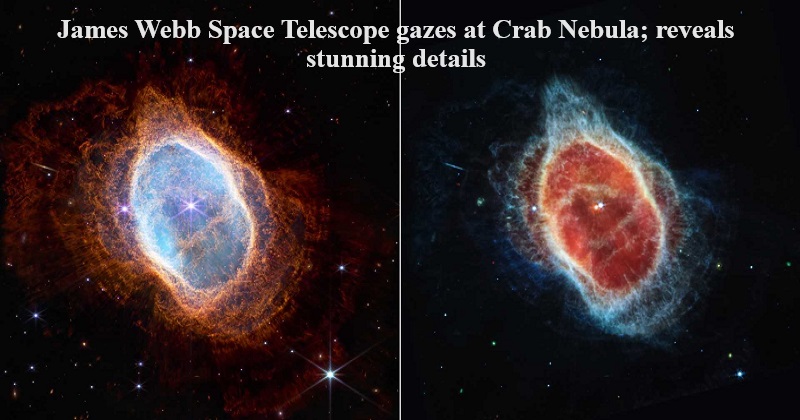
The National Aeronautics and Space Administration (NASA) has unveiled remarkable details of the Crab Nebula captured by the extraordinary James Webb Space Telescope. Situated in the constellation Taurus, the Crab Nebula is a supernova remnant located at a distance of 6,500 light-years from Earth.
The Crab Nebula is believed to be the expanding aftermath of a star’s supernova explosion, an event recorded by Japanese and Chinese astronomers around 1,000 years ago, precisely in the year 1054 AD. This celestial phenomenon has long fascinated scientists, who continue to study it in their quest to comprehend the conditions, behavior, and consequences of supernovae.
A team, led by Tea Temim from Princeton University, is utilizing James Webb’s NIRCam (Near-Infrared Camera) and MIRI (Mid-Infrared Instrument) to investigate the origins of the Crab Nebula. According to NASA, Temim stated, “Webb’s sensitivity and spatial resolution allow us to accurately determine the composition of the ejected material, particularly the content of iron and nickel, which may reveal what type of explosion produced the Crab Nebula.”
To provide a basis for comparison, NASA has released a side-by-side image of the Crab Nebula as seen by the Hubble Space Telescope and the James Webb.
The new Webb data, in conjunction with previous observations of the Crab, will enable astronomers at NASA to build a more comprehensive understanding of this enigmatic supernova remnant. The latest image also includes the mapping of the central regions and emission from dust grains (appearing as yellow-white and green). The overall shape of the Crab Nebula corresponds closely to what had been observed by the Hubble.
NASA highlighted that James Webb’s imagery demonstrates a phenomenon known as synchrotron radiation, which is produced by charged particles, such as electrons, moving at relativistic speeds along magnetic field lines. This radiation is an essential component of the observations, shedding light on various aspects of the Crab Nebula.

Post Your Comments